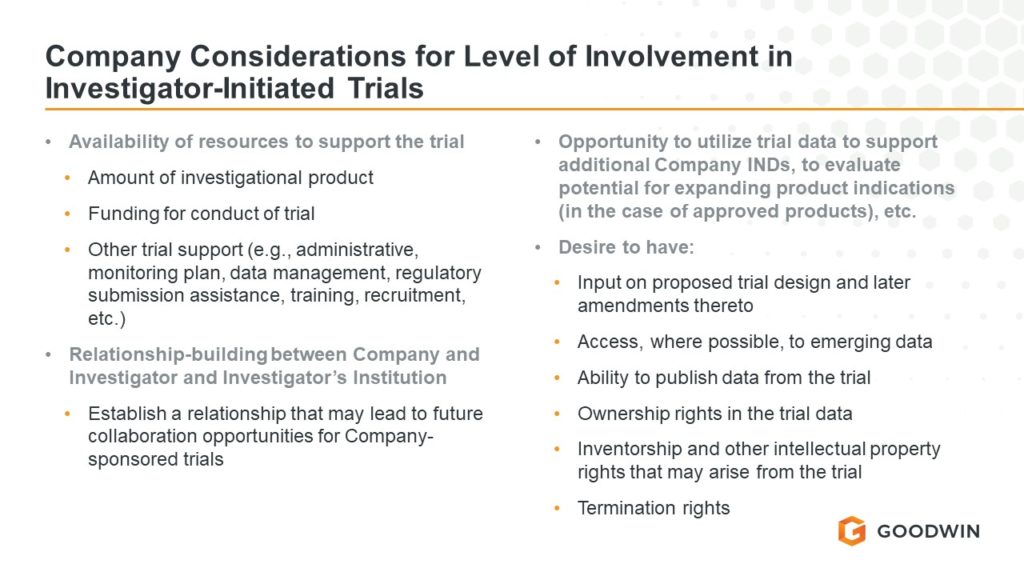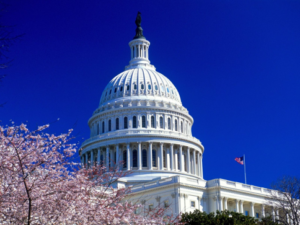
On May 2, 2023, the U.S. Food and Drug Administration (“FDA”) published draft guidance titled “Decentralized Clinical Trials for Drugs, Biological Products, and Devices” (the “Draft Guidance”). The Draft Guidance expands on the FDA’s 2020 recommendations issued in response to the COVID-19 pandemic and its 2021 draft guidance on the use of digital health technologies (“DHTs”) in clinical trials, and fulfills the directive under Section 3606 of the Food and Drug Omnibus Reform Act to “issue or revise draft guidance [ ] to clarify and advance the use of decentralized clinical studies to support the development of drugs and devices” no later than December 29, 2023.
The Draft Guidance defines a decentralized clinical trial (“DCT”) as a clinical trial where some or all of the trial-related activities occur at locations other than traditional trial sites. The FDA clarifies that its regulatory requirements for clinical investigations are the same for DCTs as for traditional clinical trials; however, the Draft Guidance outlines how clinical trial sponsors, investigators, and other stakeholders may meet these requirements in the context of DCTs given the FDA’s recognition of the significant potential benefits of DCTs, such as expanding access to clinical trials, increasing trial efficiency, and improving trial participant engagement, recruitment, enrollment, retention, and diversity.
Some of FDA’s key recommendations include:
- An important initial determination is whether it is appropriate for a particular trial to be conducted as a fully decentralized or hybrid DCT. Whereas a fully decentralized trial may be appropriate for an investigational product (“IP”) that is simple to administer, has a well-characterized safety profile, and does not require complex medical assessments, a hybrid approach may be more appropriate where the trial involves more complex medical assessments or supervision and monitoring of IP administration. The FDA recommends that questions related to the feasibility, design, implementation, or analysis of a DCT should be discussed early with the relevant FDA review division.
- Given that trial-related activities for a DCT may involve a network of locations where clinical trial personnel, local health care providers (“HCPs”), and trial-related services (e.g., labs) may be provided, for inspectional purposes the investigator should select a physical location, to be listed on Form FDA 1572 – Statement of Investigator or in the investigational device exemption (“IDE”) application, where trial participant records will be stored and where trial personnel may be interviewed.
- Both sponsor and investigator should evaluate whether certain trial-related activities may be delegated to DCT personnel located near participants’ homes. Such activities should not require detailed knowledge of the protocol or IP. Trial-related activities that are unique to the trial or require detailed knowledge of the trial protocol or the IP should be performed by qualified trial personnel who have been appropriately trained.
- Obtaining informed consent remotely may be appropriate for a DCT as long as the process is adequate and appropriate. Oversight by institutional review boards (“IRBs”) should ensure that electronic informed consent at remote locations meets applicable requirements, and the FDA recommends the use of a central IRB in DCTs to provide for more streamlined review of the informed consent documents as well the protocol and other trial-related documents.
- As with any trial, sponsors must ensure proper monitoring of DCTs based on the sponsor’s risk assessment. Sponsors should also implement a safety monitoring plan that accounts for the decentralized nature of the clinical trial, including by prespecifying whether safety data will be collected via telehealth or in-person visits and whether DHTs will be used to collect certain safety information. The Draft Guidance underscores the importance of providing sufficient instruction and contact information to the trial participant should an adverse event occur and allowing the participant to arrange an unscheduled visit (either remotely or in-person), as appropriate. The FDA also recently finalized its Q&A guidance on risk-based monitoring of clinical investigations, which we blogged about here.
- FDA notes that the “variability and precision” of data obtained from a DCT may differ from data obtained in a traditional site-based clinical trial. For example, remote assessments may vary from on-site assessments, particularly if trial participants are performing their own assessments at home. Similarly, assessments performed by local HCPs may be less precise and consistent than assessments conducted by on-site trial personnel. FDA states that while such variability may not affect the validity of a finding of superiority, it could compromise a finding of non-inferiority relative to an active control drug that has been evaluated in a traditional site-based trial. FDA therefore recommends that sponsors consult with the relevant review division if planning a DCT with a non-inferiority design.
- For telehealth visits during a DCT, investigators should confirm a participant’s identity during each visit and complete the relevant case report forms and other documentation for each visit. Additionally, the sponsor and investigator are responsible for ensuring that remote clinical trial visits comply with relevant state telehealth laws and as applicable, the telehealth laws of countries outside the U.S.
- Given multiple sources of data collection in a DCT, the sponsor should develop a data management plan that includes the data origin and data flow from all sources to the sponsor; methods for acquiring remote data from trial participants and personnel; and a list of vendors for data collection, handling, and management.
The Draft Guidance demonstrates the FDA’s support of more widespread use of DCTs. At the same time, the Agency acknowledges that DCTs can be challenging to implement successfully, including because DCTs require coordination of trial activities with numerous parties in multiple locations that are not traditional trial sites. The Draft Guidance also notes that if significant safety risks emerge due to remote administration or use of an IP, or if other circumstances arise that warrant in-person visits, the sponsor should discontinue remote administration or use of the IP, inform the FDA, IRB, and investigators, and determine whether the trial should be amended or continue.
Interested stakeholders may submit comments on the Draft Guidance by August 1, 2023 to Docket FDA-2022-D-2870.
Contact the authors or another Goodwin FDA team member with any questions or if you would like to submit comments to the FDA on the Draft Guidance.


 The U.S. Food and Drug Administration recently issued its
The U.S. Food and Drug Administration recently issued its 

 The U.S. Food and Drug Administration (FDA) recently issued
The U.S. Food and Drug Administration (FDA) recently issued 
